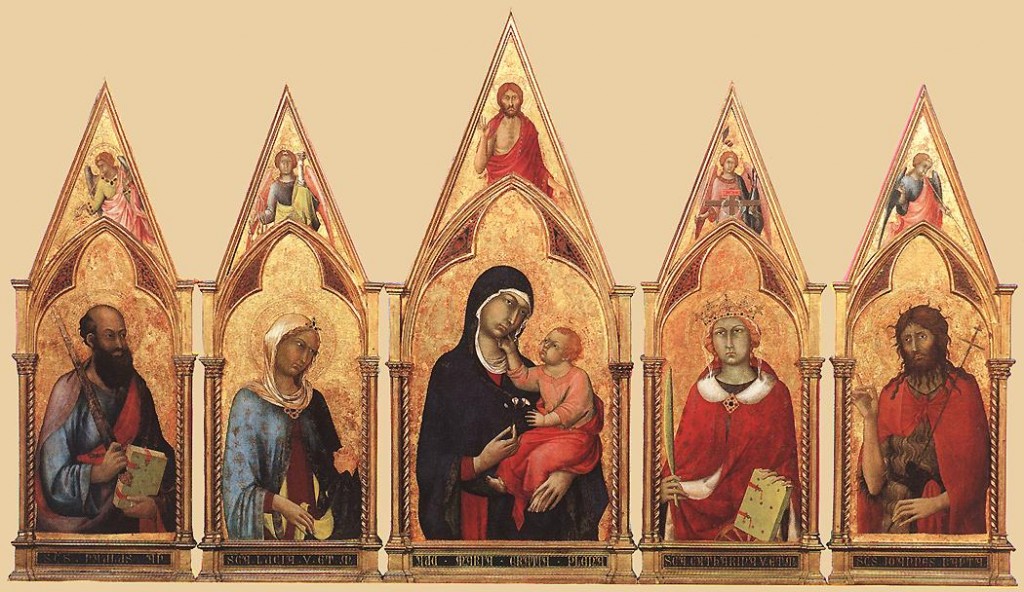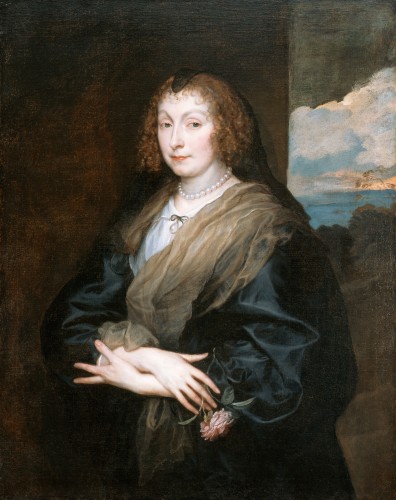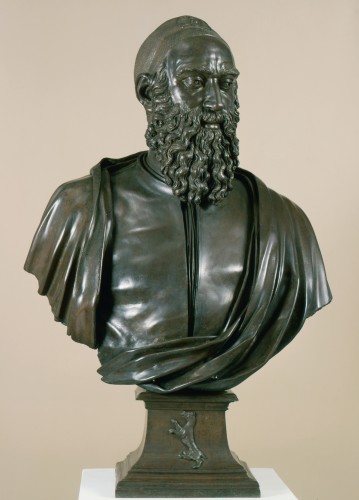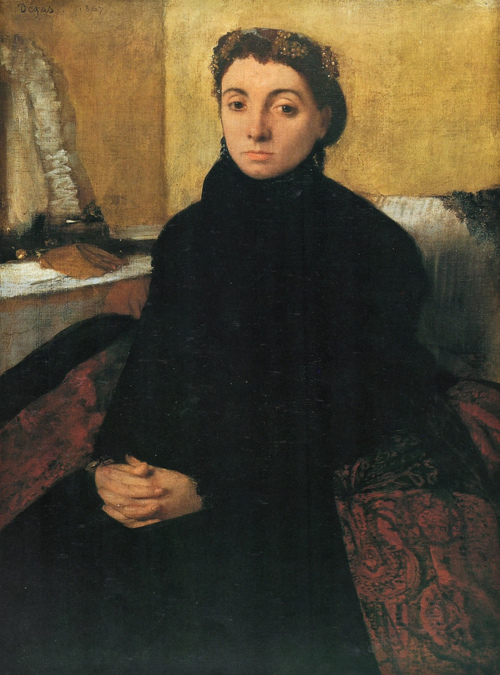It was a palace of paintings. For conservative old Beantown, she was simply startling and an individualist; she erected a Venetian pleasure dome in the Back Bay and filled it with masterpieces for the public to enjoy.

Read More:http://mrmhadams.typepad.com/blog/politics/page/2/ ---In Boston Gardner officials boast that 'their museum' is "unchanged but not stagnate." Thanks to Renzo Piano this is an understatement at best, since the very way one enters the museum and circulates has been totally altered. How well I remember my first time. leaving the brilliant summer's sunshine, the noise of a baseball game in progress, and entering into a low, relatively cool and hushedly quiet place...walking toward the softly splashing sound of water, brushing past an enormous tree fern, how exhilarating to see a sight that had made even proper Bostonians gasp with delight a century ago, one that makes me gasp now too, after half a dozen visits, over a distance of 25 years. Moreover there were paintings upstairs of opulent grandeur, set off against remnants of Mrs. Gardner's old ball gowns . My favorite?...Titian's incomparable allegory with an unexpected crease down the middle. How reassuring it used to be knowing that Mrs. Gardner's will stipulated that nothing at Fenway Court would ever be altered in any way which might diminish or cheapen her vision of a sublime refuge.---
…In 1892 Mrs. Gardner tangled with the Empress Frederick of Germany over Susterman’s A Young Commander, which she bought thinking it was a portrait of the Duke of Monmouth from whom she claimed descent. Through Count Seckendorf in Berlin, the Empress tried to get Isabella to step aside and let her have the picture. Characteristically, Belle replied that her Stuart ancestry gave her as much right to it as the Empress. Small wonder that when she sent a wreath to Liszt’s funeral marked “Homage de l’Amerique” it was placed alongside that of Queen Victoria.

Read More:http://centuriespast.tumblr.com/post/13823797856/the-death-and-the-assumption-of-the-virgin-about ---The Death and the Assumption of the Virgin about 1432 Fra Angelico, Italian, about 1390/95 – 1455 Isabella Stewart Gardner Museum ---
The Piero della Francesca Hercules, which Joseph Lindon Smith of the Boston Museum got out of Italy for her, still on its original plaster, after four years of wrangling with the authorities, is said to have been in the artist’s own villa. it is Piero’s only pagan subject and his only fresco outside Italy. The Simone Martini Madonna and Child With Four Saints is the only complete altarpiece by this artist outside of Italy at the time. The tiny Fra Angelico from Florence, The Death and the Assumption of the Virgin, was described by Bernard Berenson as one of the loveliest pictures ever painted. Botticelli is represented by superlative examples of both extremes of his career: the early Chigi Madonna from their palace in Rome and the late Tragedy of Lucretia which Mrs. Gardner bought through Berenson from the Earl of Ashburnham.

Source: Wiki---English: Virgin and Child with Saints (Boston Polyptych) Português: Virgem com o Menino e santos (Políptico de Boston) Date between 1321 and 1325 Medium Tempera and gold on wood panel. Dimensions Height: 235 cm (92.5 in). Width: 405 cm (159.4 in). Current location Isabella Stewart Gardner Museum
One of the other great paintings is a superb Rubens portrait of Thomas Howard, Earl of Arundel, who often appeared in the masques of Ben Jonson for which Inigo Jones supplied the decor, once graced Warwick Castle. Berenson called Anthony Van Dyck’s Lady With a Rose that painter’s Mona Lisa. Her superb Degas portrait of Mme. Gaujelin was rejected by the sitter as too unflattering; yet Mrs. gardner liked to tell people how annoyed the lady was when she learned it had been sent to America.

Read More:http://www.gardnermuseum.org/collection/browse?filter=artist:3168 ---The sitter crosses her arms in an enigmatic fashion, and holds a rose casually between her fingers; the flower may symbolize the pleasures and pains of love. The delicate silvery tones and the billowing drapery are typical of the elegant portraits Anthony van Dyck made in London between 1635 and 1639. Fashion and art found remarkable rapport in van Dyck’s portraits of English women: strings of pearls, colorful silks, and casually worn diaphanous gauzes were favored by both the painter and his aristocratic sitters. An old copy of the portrait suggests that she may be a member of the Killegrew family; van Dyck painted several other members of the family. Source: Alan Chong, "Portrait of a Woman with a Rose," in Eye of the Beholder, edited by Alan Chong et al. (Boston: ISGM and Beacon Press, 2003): 140.t
The most notable sculpture at Fenway Court is Benvenuto Cellini’s bronze bust of the art patron Bindo Altoviti. Michelangelo was not noted for his magnaminity toward other artists, but the gardner hand list proudly quotes his letter praising this work, one of only a few authentic Cellini’s in America. Morris Carter, who was Mrs. Jack’s biographer called the mosaic pavement at the center of the court at Fenway, said to be from the Villa Livia in Rome, the finest example in the United States.

Image:http://www.gardnermuseum.org/collection/artwork/3rd_floor/titian_room/bindo_altoviti/ Read More:http://www.arte.it/work_of_art/portrait-of-bindo-altoviti-4922 ---Michelangelo praised this bust when he saw it in Bindo's palace in Rome, comparing it favorably to busts made in Ancient Greece and Rome. Since the Renaissance revered the ancient world, this was high praise, especially from one considered the greatest sculptor of the time. Cellini&
s bust of Bindo is unique - the only major bronze made for a private patron in the Renaissance. Because of its cost, bronze was usually employed only for portraits of rulers. It is also Cellini's last portrait, last bronze sculpture, and his only securely documented major sculpture outside Europe.---
——————

Read More:http://impressionistsgallery.co.uk/artists/Artists/def/Degas/2.html ---Portrait of Joséphine Gaujelin, 1867 Oil on canvas, 61.2 x 45.7 cm Isabella Stewart Gardner Museum








 COMMENTS
COMMENTS



